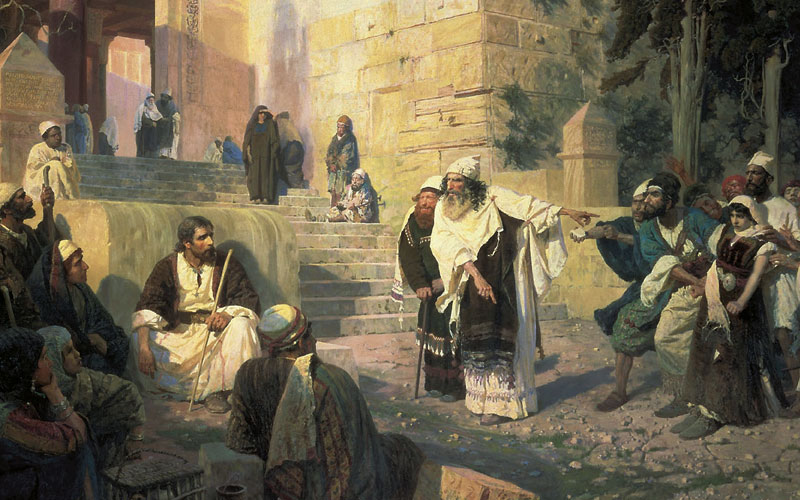
On one occasion when Jesus was in the temple, the scribes and Pharisees brought a woman before Him who had allegedly been caught in the act of adultery. It is an interesting account, and some have tried to use it to argue that we should not try to strictly follow God’s word. But as we examine the passage, we can see that Jesus teaches just the opposite – we must be careful and diligent to follow what God’s word teaches.
The scribes and Pharisees brought this woman before Jesus, claiming that she was “caught in adultery, in the very act” (John 8:4). Then they tested Jesus: “Now in the Law Moses commanded us to stone such women; what then do you say?” (John 8:5). They were trying to find some reason to accuse Him, presumably either to take Him before the Roman rulers or to turn the people against Him. In either case, Jesus initially ignored their question.
When they pressed Him, He responded, “He who is without sin among you, let him be the first to throw a stone at her” (John 8:7). Then, one by one, each of them left until there was no one left but Jesus and this woman. He asked her, “‘Woman, where are they? Did no one condemn you?’ She said, ‘No one, Lord,’ And Jesus said, ‘I do not condemn you, either. Go. From now on sin no more’” (John 8:10-11).
At a quick glance, it may appear that Jesus let her get away with adultery – even though the Law condemned her to death – simply because there were no sinless individuals there to begin the stoning. But this is not at all what this passage is teaching.
It is important that we understand what the Law of Moses actually said with regard to this situation: “The adulterer and the adulteress shall surely be put to death” (Leviticus 20:10). Why was this woman brought alone? Where was the man from this alleged adultery? The Law demanded that both be brought and put to death. But only one was brought here to Jesus.
Furthermore, the Law indicated who was to throw the first stone: “The hand of the witnesses shall be first against him to put him to death, and afterward the hand of all the people” (Deuteronomy 17:7). Whoever was without sin, meaning whoever was a witness to the adultery and was judging and condemning this woman according to the Law of Moses, they were to cast the first stone. There was no one who could do this. So one by one they left.
Jesus was not showing us that we may have a casual attitude toward God’s law. Instead, He taught the importance of strict adherence to what God has revealed. Who was being loose with the Scriptures? Not Jesus, but rather the ones who tried to condemn this woman outside of the law.
It is also interesting to see what Jesus told this woman after everyone departed: “Go. From now on sin no more” (John 8:11). Why would Jesus tell her to “sin no more” if obedience to God’s law was unnecessary? Why did He say this if His point to the Pharisees was that seeking God’s mercy is more important than complying with His law? Jesus was teaching of the role that both God and man have to play in salvation. God extends His mercy. Man must believe and obey His word.
It is certainly not an easy command to fulfill – to sin no more. But that is the goal for which we must strive (Matthew 5:48; 1 John 2:1). If we fall, God is ready and willing to forgive as long as we still have life and the earth still stands. But instead of using His grace as an excuse for sin (Romans 6:1; Jude 4), let us use it as an opportunity to move further away from sin and become more like God (Romans 6:11-12; Titus 2:11-12).










